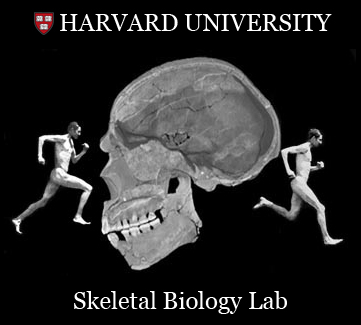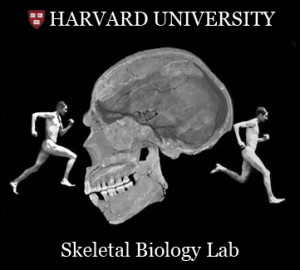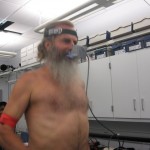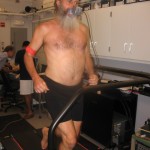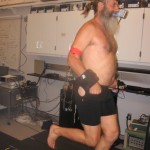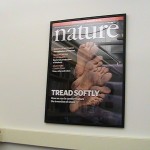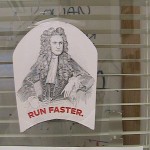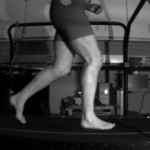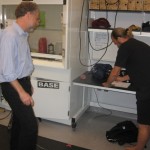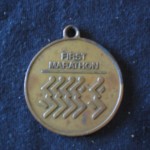Summary
“Ken, … We’ll plan a very special experiment for you in the lab.” – Dr. Daniel Lieberman
Story
So we loaded up the car and traveled to Cambridge, Massachusetts that is…
Videos
Note the subtle fore-foot landing. I’m not running “up” on the balls of my feet. My knees are bent, which changes the angle of my foot just enough for a fore-foot landing. Note also, that my foot travels in front of my body, then begins to move backwards – as my knee bends more, just before landing – this reduces impact, and the backwards motions gets the foot traveling the same speed as the surface, before landing.
At the tail end of my stride, though my heel comes up before my fore-foot, I’m not trying to push my fore-foot into the ground. It actually feels more like I’m lifting my foot, somewhat parallel to the surface. This purposeful lift reduces the all-too-typical stress on the foot that causes stress fractures in folks who insist on running up on the balls of their feet or pushing off. Relax those calves, let your heel touch the ground. If you feel your heel pounding, bend your knees. If your heels aren’t touching the ground, relax your calves.
Also keep in mind, this is SLOW-MOTION video. Do not try to imitate my running at the speed you see in this video. Cadence should be faster than 180 steps per minute.
Related Links
- Biomechanics of Foot Strikes & Applications to Running Barefoot or in Minimal Footwear
- Barefoot Running Step by Step
Gallery
- Ken Bob on treadmill (2010 June 9) Daniel Liberman’s lab at Harvard
- Ken Bob on treadmill (2010 June 9) Daniel Liberman’s lab at Harvard
- Ken Bob on treadmill (2010 June 9) Daniel Liberman’s lab at Harvard
- Ken Bob in Footwear??? but not running…
- Tread Softly – Skeletal Biology lab, Harvard
- Skeletal Biology, Daniel Lieberman
- Sir Isaac Newton – Run Faster.
- Ken Bob on treadmill at Harvard (2010 June 9) Daniel Lieberman’s lab
- Dan witnesses Ken Bob signing waiver, just in case he dies…
- Harvard Skeletal Biology
